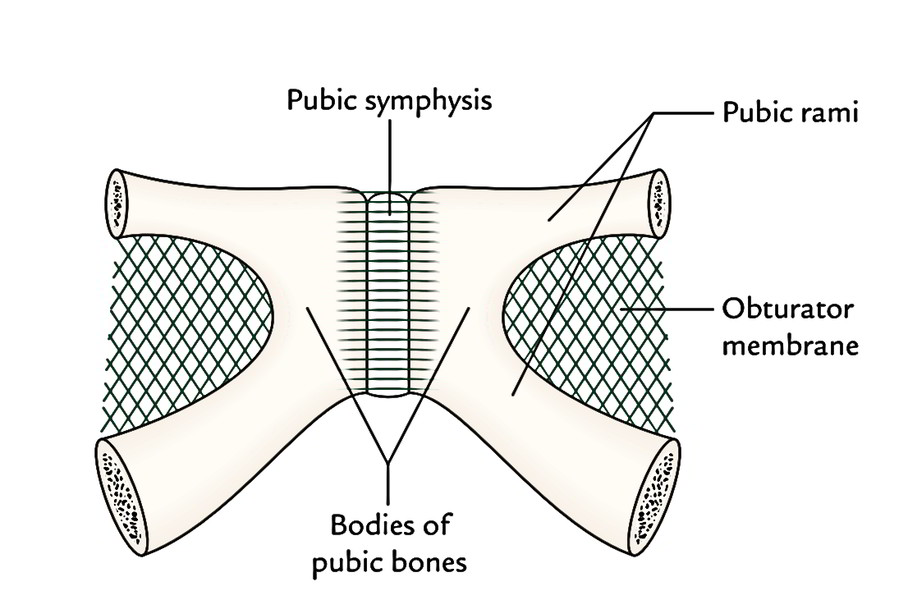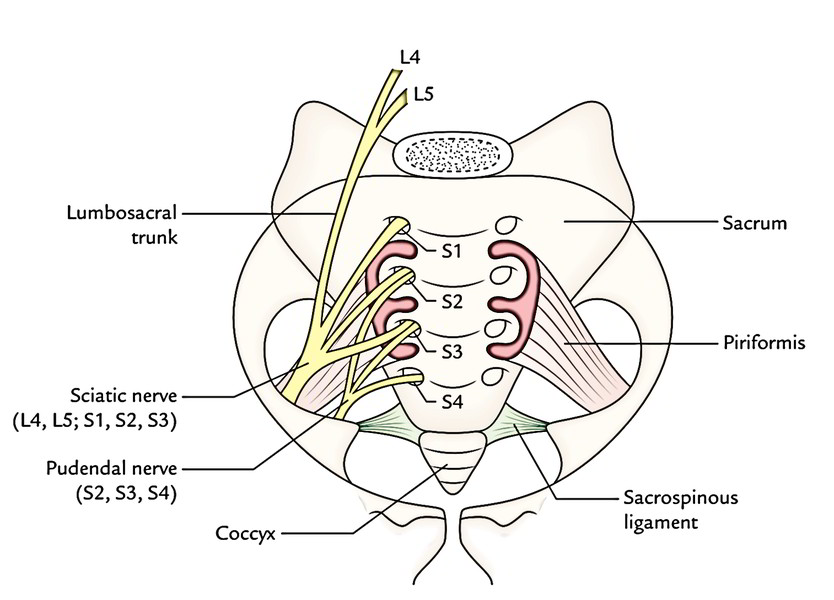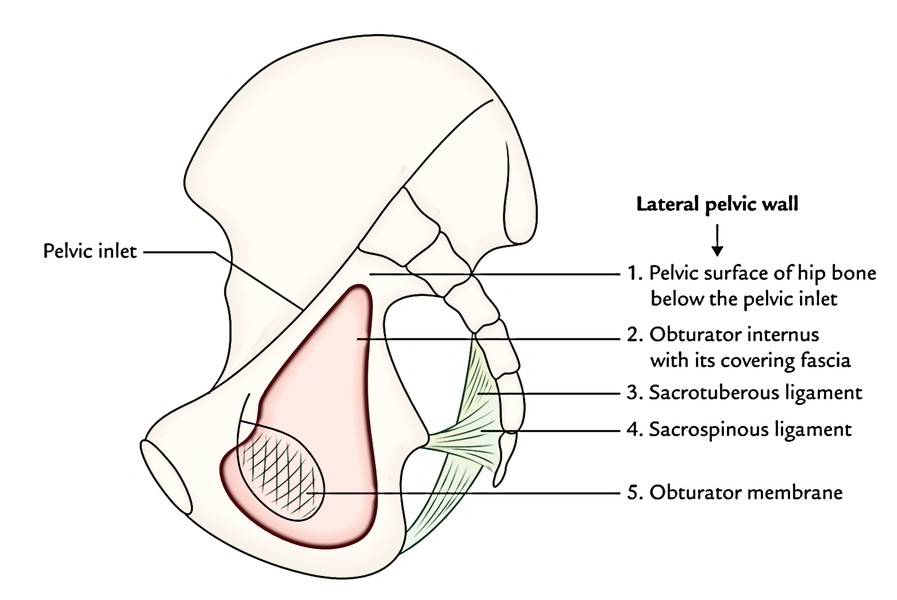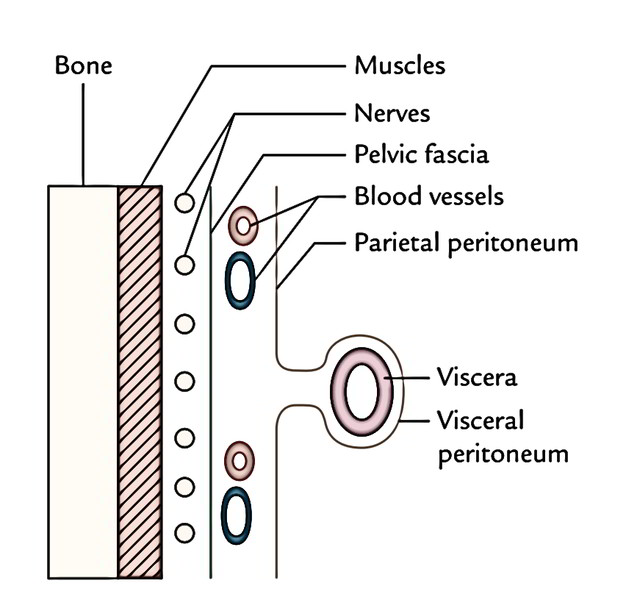The Pelvic Walls are created by the bones and ligaments covered by the partial-clothed fascia and parietal peritoneum.
The pelvis comprises of 5 walls:
- Anterior wall.
- Posterior wall.
- 2 lateral walls (left and right).
- Inferior wall (or pelvic floor).
Anterior Wall
The anterior wall is composed by the pelvic surfaces of the bodies of the pubic bone, the pubic rami, and the pubic symphysis and is the shallowest wall.
Posterior Wall
Another wall which is extensive in nature and is composed by the pelvic surfaces of the sacrum and coccyx, is the Posterior wall. It’s lined by the piriformis muscles with their covering fascia.
Lateral Wall
The lateral wall is composed of the pelvic outermost layer of the hip bone below the pelvic inlet, the obturator membrane, the sacrotuberous and sacrospinous ligaments, and the obturator internus muscle with its covering fascia.
Inferior Wall (Or Pelvic Floor)
The inferior wall is composed by the pelvic diaphragm, which in turn is created by the levator ani and coccygeus muscles with their covering fasciae. The pelvic diaphragm stretches across the true pelvis and splits it into the key pelvic cavity above and the perineum below. The floor of the pelvic cavity supports the pelvic viscera.
The soft tissue structures on the pelvic walls from deep to superficial, are ordered as follows:
- Muscles
- Nerves
- Pelvic fascia
- Blood vessels
- Peritoneum





 (62 votes, average: 4.53 out of 5)
(62 votes, average: 4.53 out of 5)